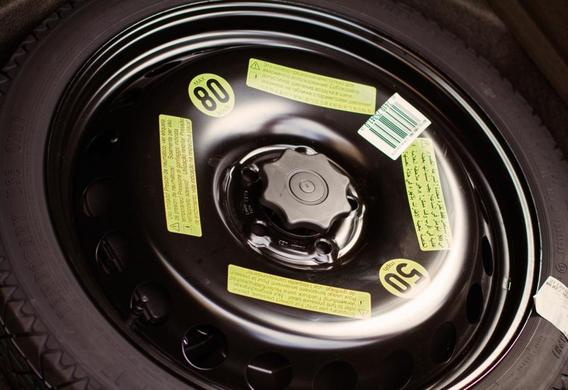
For decades, almost all vehicles were equipped with spare wheel, and sometimes a few. In our days, however, improving the efficiency of automobiles requires new solutions: the spare wheel weighs heavily and takes a lot of space.
In order to understand how the idea of equipping vehicles with a spare wheel was born, it is necessary to imagine the state of the roads and the level of technology development for 100 years. In those times, self-propelled vehicles were still rare, and people and cargo moved mostly with horse-thrust. As a result, there was a large amount of nails and other dangerous "garbage" on the roads, which was easily broken by car tyres and cameras. The labor of the wheel repair operation, especially in the field conditions, led to the fact that in 1909, Thomas B. Jeffery had the idea of using a replacement wheel in their serial model Rambler, which became the first car in history with a "spare" car.
After a little while, the spare wheels have become a permanent feature of the car design for decades. Poor road conditions and the poor quality of rubber compounds for tyres have resulted in the increase of the number of spare wheels on many vehicles to two. The spare wheels have had a serious impact on the design of the cars, since attempts to write them harmoniously into the exterior have led to very interesting decisions that have become classic. In spite of all the unreserved benefits of spare wheels, there are known cases in history. During World War II and the Korean War, the US government has banned all new vehicles from being picked up by "spare parts".
Where do we find him?
There were plenty of options for securing the spare wheel for the entire history. If classic cars usually had outdoor "fuses" fixed behind the front wings or on the back of the trunk, then the automakers tried to remove them from the outside eyes. Most vehicles now have a special deepening for the spare wheel under the luggage compartment. The spare wheel can also be secured at the rear of the vehicle. In such a scheme, the wheel does not "eat" the space of the boot, but it is uncomfortable. This method is not suitable for automobiles with a small clenence. Heavy vehicles and SUVs are usually equipped with a spare wheel mounted outside the body, most often on the back door, but models with "spare" on hood, roof and side. Finally, some old models (mainly domestic production) were characterized by a spare wheel located in the engine compartment.
Fifth wheel today
A full-sized spare wheel is becoming increasingly rare for normal passenger cars. The excellent condition of the roads, the large number of points of mounting points, the use of tyre pressure sensors significantly reduced the need for a spare wheel-especially this applies to developed countries. Alternatively, motorists are offered to use either a lightweight emergency wheel or a special set for fast repair of the tyre without removing it (usually, a cartridge with a leaky) or a RunFlat tyre technology, which, even in the case of punctages, allow the movement to continue to the nearest car service.
The use of modern technologies, along with the increase in the number of drivers who do not want to be used with a jack and a balloon, has led to the fact that today less than 40% of new cars are equipped with full-dimensional "spare" and about 25% do not even have "docks". A full-size spare wheel does not lose its relevance, perhaps only for off-road vehicles. As the "milkette" cannot be used because of the high load, the airtight seal is not highly reliable, and the cost of RunFlat tyres is high enough, "spare" is still the most convenient, reliable and inexpensive option.
Unportable favor
Despite the fact that most experts already compare a spare wheel with cassette magnets or "starter curve"-a hint of an ambulance to be sent to a car museum, "spare", it seems that it is not going to be easy to give up their positions. This is particularly true for countries with poor road surface quality and the absence of points of assembly on every corner. In addition, as the drivers ' surveys show, experienced motorists continue to trust the spare wheel and their own hands more than the various high-tech products. The spare wheel can also save the driver. According to the rules of exploitation of "odours", they should be included in rotation periodically, that is, all five wheels are in effect, since they must spend the same amount of wear on the same time as "on leave". This allows you to increase the life of the entire set of tires by 20%.
The fact that Volkswagen Beetle was the first generation of pressure in the "spare" was used for windshield washer. A recent study showed that the spare wheel located below the luggage compartment reduces the risk of injury to passengers from the rear.







